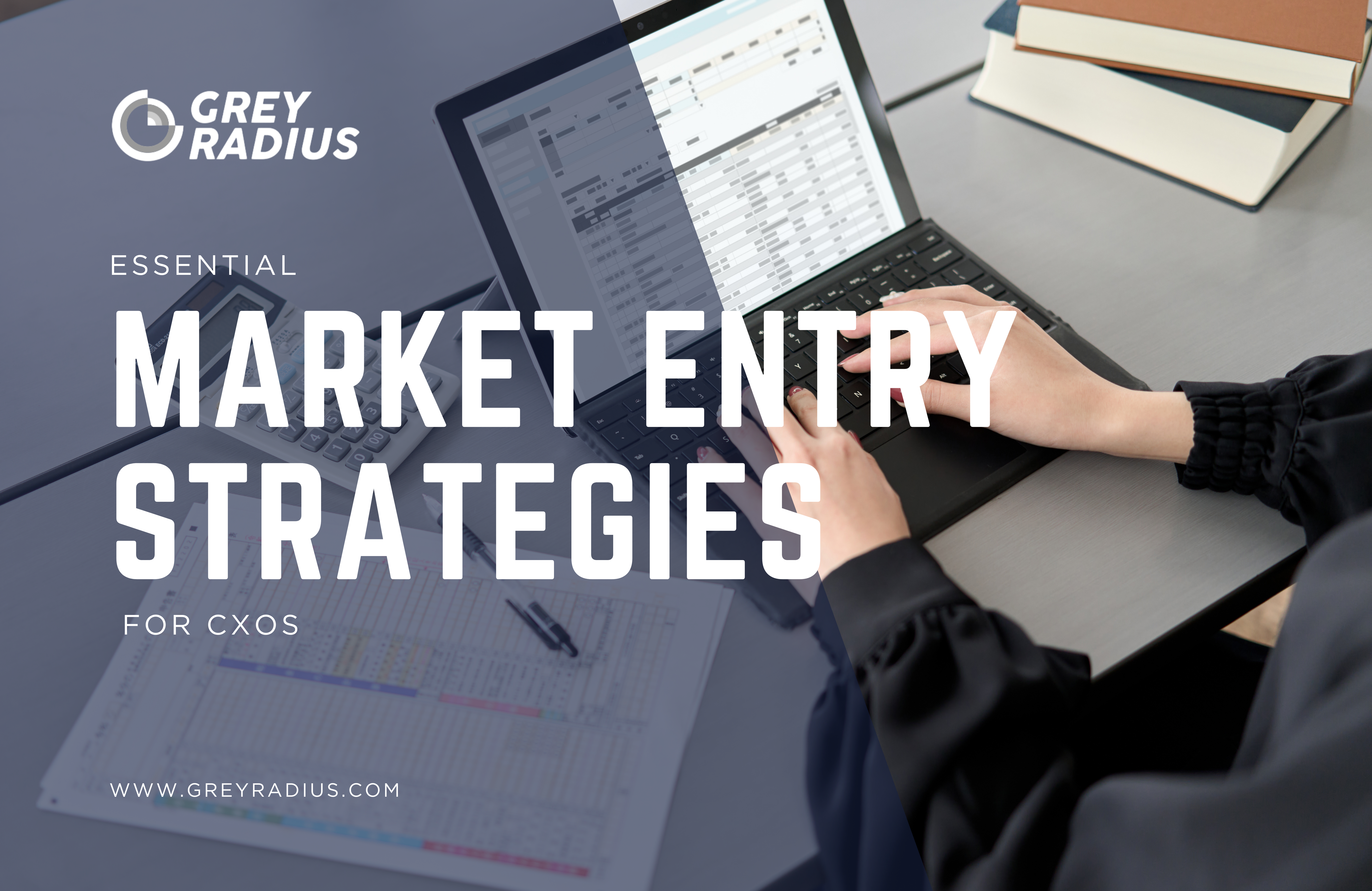In today’s unpredictable global economy, one thing is certain: expansion remains at the core of corporate growth. Yet, for CXOs, the rules of market entry have dramatically changed. The traditional approaches—driven primarily by scale, capital, and first-mover advantage—are no longer sufficient.
As we move into 2026, resilience will become the most important capability for leaders guiding their organizations in new markets. Whether you’re a CEO, CBO, strategy head, or country manager, the challenge is not just entering a market but doing so in a way that withstands volatility, creates long-term value, and builds sustainable growth.
At GreyRadius Consulting, we believe resilience is what separates companies that thrive from those that retreat.
This blog explores how CXOs can build resilient market entry strategies for 2026 and beyond.
Why Market Entry Resilience Matters More in 2026 and beyond
The world is still growing. UNCTAD says that cross-border investments will keep going up in 2026 because of changes in new markets, digital ecosystems, and the green economy. But the world that CXOs live in today is very complicated:
- Geopolitical instability: trade wars, regional conflicts, and changing alliances.
- Uncertainty about regulations: sudden changes in data, ESG, and taxes.
- Changing customer behavior: After the epidemic, people want personalized service, eco-friendliness, and trust.
- Disruption in technology: AI, automation, and digital-first ecosystems are altering sectors overnight.
Due to this, CXOs can't only use old ways to grow their businesses. Instead, they should use resilient tactics that find a balance between speed and sustainability, risk and opportunity, and creativity and discipline.
The CXO Agenda for Market Entry
Five things are on the new market entry agenda for CEOs who are in charge of global growth and sit in boardrooms:
Speed with Caution: Enter the market quickly enough to gain benefits, but implement organized pilots to minimize risks.
- Considering the customer first: Knowing not just the size of the market but also the whole customer ecosystem.
- Risk Diversification: Making sure you don't rely too much on one channel by building multiple ones (alliances, digital entrance, direct presence).
- Sustainability Integration: Making ESG factors a must in all market choices.
- Flexibility and adaptability: Making plans that can change when things go wrong.
Four Pillars of Resilient Market Entry Strategies
Resilient market entry strategies consistently rest on four key pillars:
1. Market Intelligence Based on Data
CXOs today use predictive analytics, customer intelligence, and real-time data to figure out if anything is possible. To do this, we need to go beyond broad numbers and look for deeper insights:
- What does the customer journey look like in the target market?
- Who are the people who are causing problems and the others who are hiding?
- How are local policies changing because of ESG and technology?
Data doesn't get rid of uncertainty, but it does let CXOs plan ahead and get ready for different situations.
2. Design for Agile Go-To-Market
A plan that is too strict is weak. To enter a market successfully, you need to be able to adapt quickly by starting with small tests, learning swiftly, and expanding what works. For instance, a tech business that wants to penetrate Southeast Asia might start with a digital-first presence, try out different ways to get customers to interact with them, and only then set up physical operations. Agile design lets executives change their playbook without throwing off the whole entrance plan.
3. Planning for different scenarios and managing risk
CXOs must now accept that disruptions will happen. Resilience depends on scenario planning, whether it's a supply chain shock, a regulatory delay, or a change in the world order.
Some useful ways to do this are:
- Creating "go/no-go" decision frameworks for varying levels of risk is one useful method.
- Testing entry models against changes in currency value, trade barriers, or cyber risks.
- Making backup plans with local partners or other supply networks.
4. Governance and Stakeholder Alignment
The C-suite, growth teams, and country managers all need to work together to make resilient entrants materialize. Governance frameworks should make it clear:
- Who makes swift decisions when things go wrong?
- How do you make sure that your strategies for growth embrace ESG goals?
- What systems of accountability make sure that plans stay on track?
Strong Market Entrants, for example
Industries that do well in new markets are the ones that make their goods and services strong.
- Automakers: To solve supply chain challenges, car firms that wish to sell electric cars in Asia are working with local businesses.
- Digital health: Enterprises grow by testing telemedicine pilots before they build up their physical infrastructure.
- Fintech: African entrepreneurs work with regulators early to avoid compliance issues.
What do they all have in common? Being able to change, see the future, and get along with people are all parts of resilience.
The CXO Action Framework
So, how can leaders make sure that their next market launch includes resilience? Here are some suggestions for a five-step framework:
- Draw a map of the ecology around your customers: You should also look for unmet needs, influencers, and digital behaviors in addition to figuring out how big the market is.
- List and plan for each of the following risk factors: Cultural, political, financial, and legal
- Plan Pilot-Scale-Expand Models: Start small, try out your ideas, and then grow with confidence.
- Form strategic partnerships: By teaming up with local players, distributors, or M&A targets to share risks and speed up entry.
- Include governance in the system: Create a cross-functional expansion council to oversee the project and make sure it stays strong.
What will happen when you enter the market in the future?
We believe that by 2030, three big shifts will shape how people enter the market:
- Intelligence backed by AI makes decisions on who can enter right away.
- Requirements for green growth, with ESG becoming a "license to operate."
- Ecosystems that function together, where groups grow faster than single people
CXOs will no longer ask, "Can we enter?" Instead, they will ask, "Can we stay strong enough to thrive?"
Conclusion
In 2025 and beyond, being brave won't help you win in new markets; being tough will. CXOs who plan based on intelligence, flexibility, and risk will thrive in new markets while others fail.
Management and governance will not only help companies enter markets successfully, but they will also help them keep growing when others fail.
At GreyRadius Consulting, we assist executives in figuring out what customers and markets want, make sure their plans are in line with their long-term goals, and deal with the unknowns that come with expanding into new areas.







